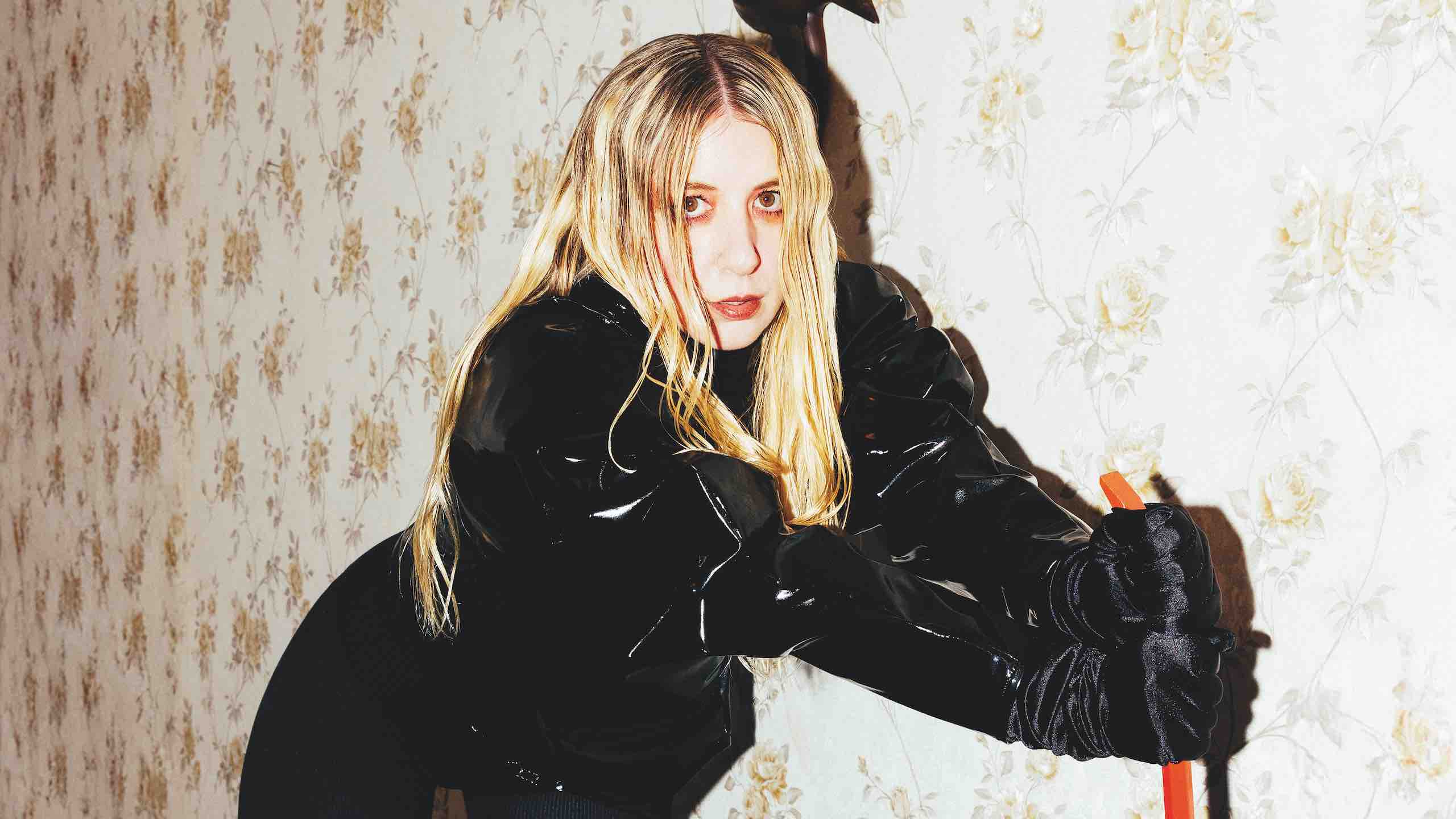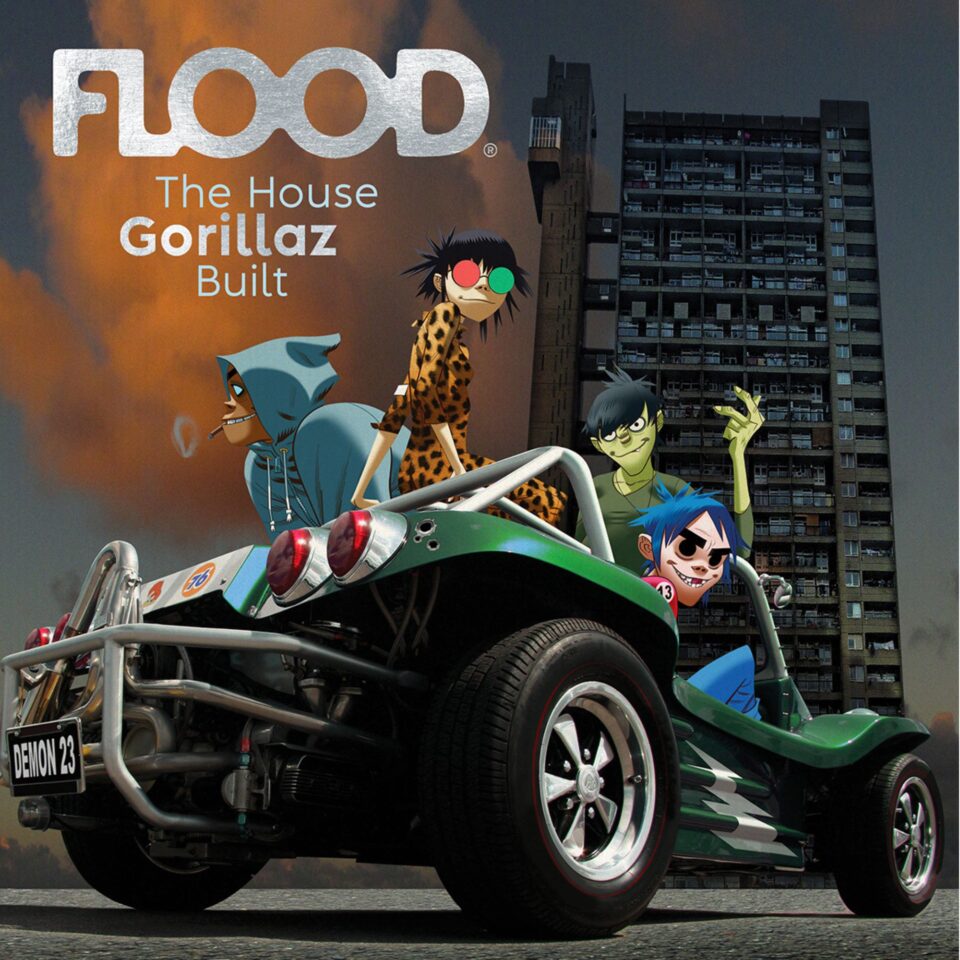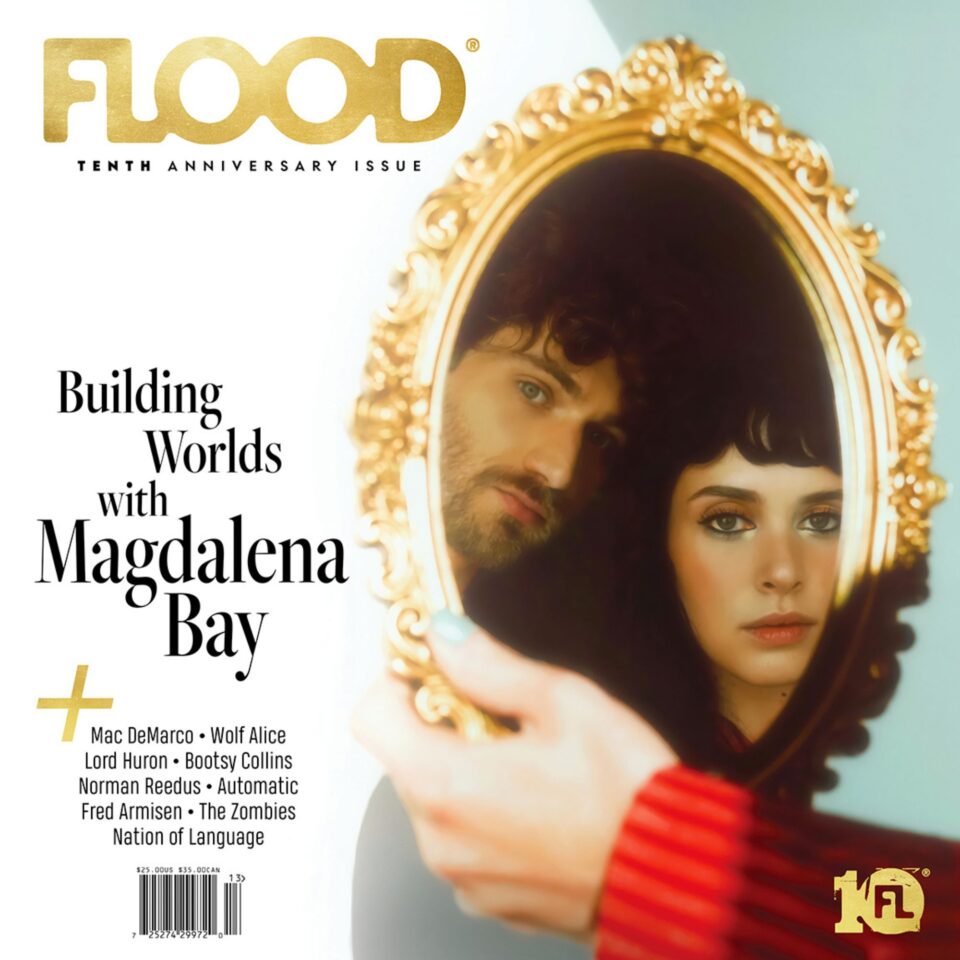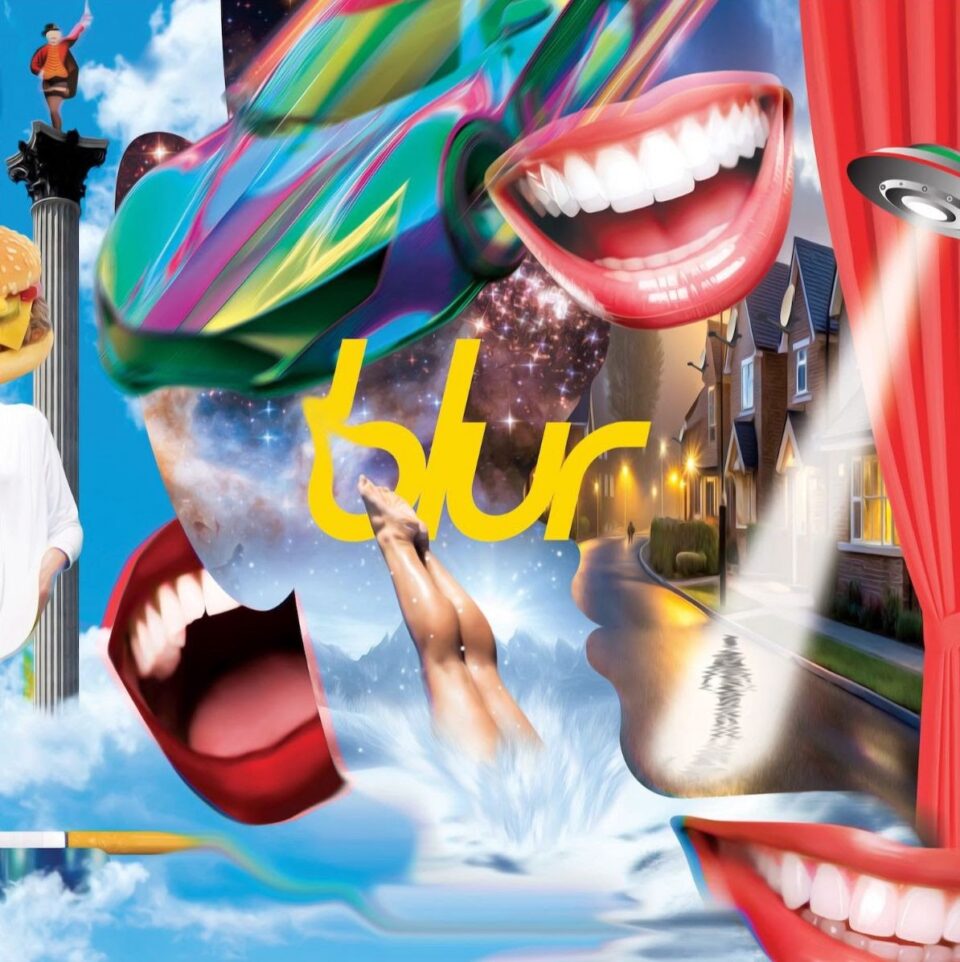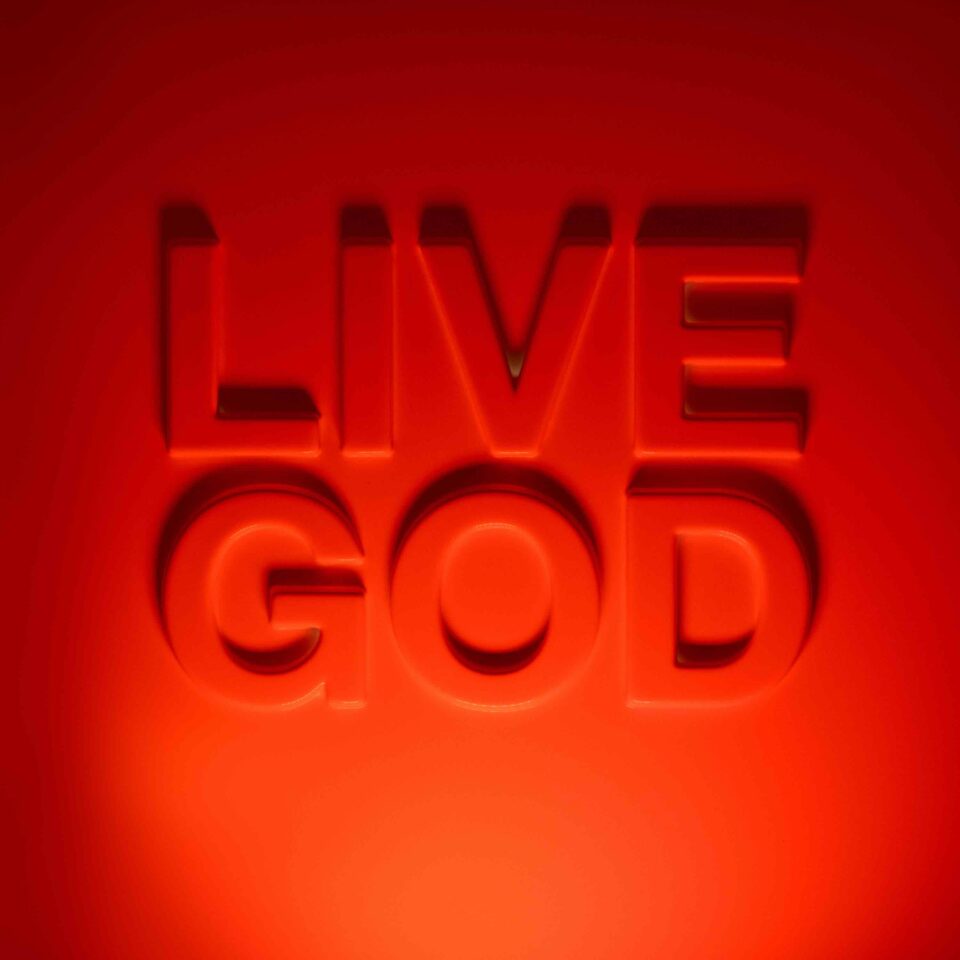It’s taken a moment for Austra to bounce back from the COVID pandemic, but as far as the music goes, that may be for the best. Five years ago, Katie Austra Stelmanis’ last album HiRUDiN fell victim to dropping within the brief window early in 2020 when the music industry wasn’t entirely sure how to proceed, with much of the music released during that period being brushed aside and quickly forgotten. On top of it all, a breakup was soon to follow, providing a well of raw emotions it’s probably best to dissect on one’s own before sharing them with your listeners.
And now we have Chin Up Buttercup, Austra’s fifth album which, as the title suggests, is relatively chipper when you consider that it’s technically both a breakup record and a “pandemic album.” Largely inspired by Eurodance and the electronification of new age music in the early 2000s, the record’s early singles painted the Canadian songwriter’s return as downright euphoric, with the remaining track list revealed today following suit. It’s a bit jarring, then, to read Stelmanis’ breakdown of the album and learn that the vibrantly building single “Fallen Cloud”—which oddly sounds like a euphoric flip of a darkwave-y early Austra track like “Beat and the Pulse”—was actually born in the midst of grieving. “I’m singing while in a delusion that I have the correct formula to bring my ex and I back together,” she shares.
With the album out now via Domino, Stelmanis broke down each track on Chin Up Buttercup for us. Stream along, and read her advocation for the foundation of the Sean Nicholas Savage School of Songwriting below.
1. “Amnesia”
After a string of life upsets (a breakup, a pandemic, a subsequently cancelled album cycle), I found myself unable to make music for quite some time. In an effort to get out of that rut I suggested to my musician friend Kieran Adams that we begin a series of biweekly sessions with no purpose, expectation, or agenda. We met at his partner’s relative’s house in the suburbs of north Toronto in this house that was basically empty except for a huge Steinway grand piano. Over a period of some months patching ideas together we made our first track: “Amnesia.” And with that song in the bag I asked him to make a record with me.
2. “Math Equation”
While I was in a period of not making music, I did find myself writing a lot of words—almost obsessively, as if it were a survival mechanism. I ended up filling hundreds of pages of a Google Doc. Most of those pages will be kept locked away from the rest of humanity forever, but there were some pieces that I found myself drawn to. The lyrics to “Math Equation” came out of this Doc, and they inspired me to write a song in a new way. Instead of singing a melody and filling it with words, I used the words to find the melody, letting them guide the song instead of the other way around. The result is a brutally direct track that I never could’ve written had I followed my usual formula.
3. “Siren Song”
Beyond my collaboration with Kieran, I still felt hungry to work with more people. That led to a session with Patrick Holland in Montreal. He and I wrote “Siren Song” in one day, then I came back later that week after I’d spent a bit of time with the lyrics to finish the track. We were originally inspired by ABBA, which you might be able to hear through the chord progressions in the beginning of the song, but production-wise this ended up a little closer to Madonna’s Ray of Light, which Kieran and I were really inspired by later on in the album-making process. The lyrics reference the story in Greek mythology of the Sirens who lure sailors to their death until Orpheaus blocks out their singing with his lyre. Except it’s told with a flipped narrative: I’m the Siren and Orpheus is the villain, luring my love away.
4. “Chin Up Buttercup”
The title track, or maybe an anthem for being gaslit. It’s meant to evoke the sensation of your feelings not being validated, and instead perceived as a weakness to overcome. Unfortunately once you decide feeling bad is a weakness, the shame spirals begin.
5. “Fallen Cloud”
Although I didn’t realize until much later, this song was written while in the denial or negotiation stage of grief. I’m singing while in a delusion that I have the correct formula to bring my ex and I back together. “A few modifications here and there…” It’s sort of silly. But then the song fully descends into that delusion, a fantasy of a different life that at first feels hopeful but ends quietly, so that the loneliness is as palpable as ever.
6. “Blindsided”
“Blindsided” was written within weeks of a very painful breakup while I was still living in my ex-partner’s house. I recorded it as a voicenote. I don’t know if I was compelled to record it so that I’d remember that moment or if it was just an instinct, but there was some part of me that knew to document my story and how I was feeling. I found this voice note years later and decided to include it on the album, although it almost feels like a secret I shouldn’t be telling anyone.
7. “Think Twice”
This was one of the last songs I wrote for the album and it came during a time when I was already laughing and starting to have fun with the music I was making. I was beginning to feel lighter. I sincerely hope the lyrics don’t come across as too bitchy. It wasn’t my intention to disparage anyone, just to laugh a little.
8. “Look Me in the Eye”
I wrote this with Sean Nicholas Savage, who I believe is a master songwriter—an artist with an old soul who knows how to cut through the noise and channel those powers we artists are always searching for. I’ve tried to convince him to do songwriting workshops, because that’s kind of what our session felt like. I asked if he wanted to write together, assuming we’d spend a day in the studio. Instead, he booked four days in Toronto where we tried to write as many songs as possible. One of the days we walked around the city and sat in a coffee shop to write lyrics. I couldn’t come up with anything because I was too intimidated and can’t write lyrics unless I’m in a zone. His best advice: write a good hook, don’t get locked into a loop before the song is written, and worry about making things sound “cool” later. It was fun to take a song that’s totally bare-bones and produce it. Kieran and I had more than a few fights about this one, but in the end I think we got it and that the production, note by note, is perfect.
9. “Hopefulness of Dawn”
In the early days of the pandemic, Toronto was in lockdown more than any other city. In the depths of winter, that meant there were months at a time where none of us were able to see our friends. There were no outside walks, because it was too cold. I had a bubble with my new partner who was raised in rural France and who knew about all this Eurodance that had never really made it to Canada. Every weekend we’d get together and amid the cold and dark we’d blast Eurodance in my apartment and dance. It was the best antidote to the world we were living in, and those songs offered us a healthy hit of endorphins to combat the dark isolation. I wanted this feeling of euphoria to exist on my record, and here it is in the form of “Hopefulness of Dawn.”
10. “Good Riddance”
This song wasn’t called “Good Riddance” ’til the very last days of working on this album. It had a different name—I think “Wishing and Hoping,” which would make it a song of longing rather than a song of closure. And that’s significant to know, because at the time of writing it I don’t think I was yet in a place to say “good riddance.” Those words seemed too final and too extreme. But a few months or years later I decided it was a great way to end the album. I might even pretend to mean it.

